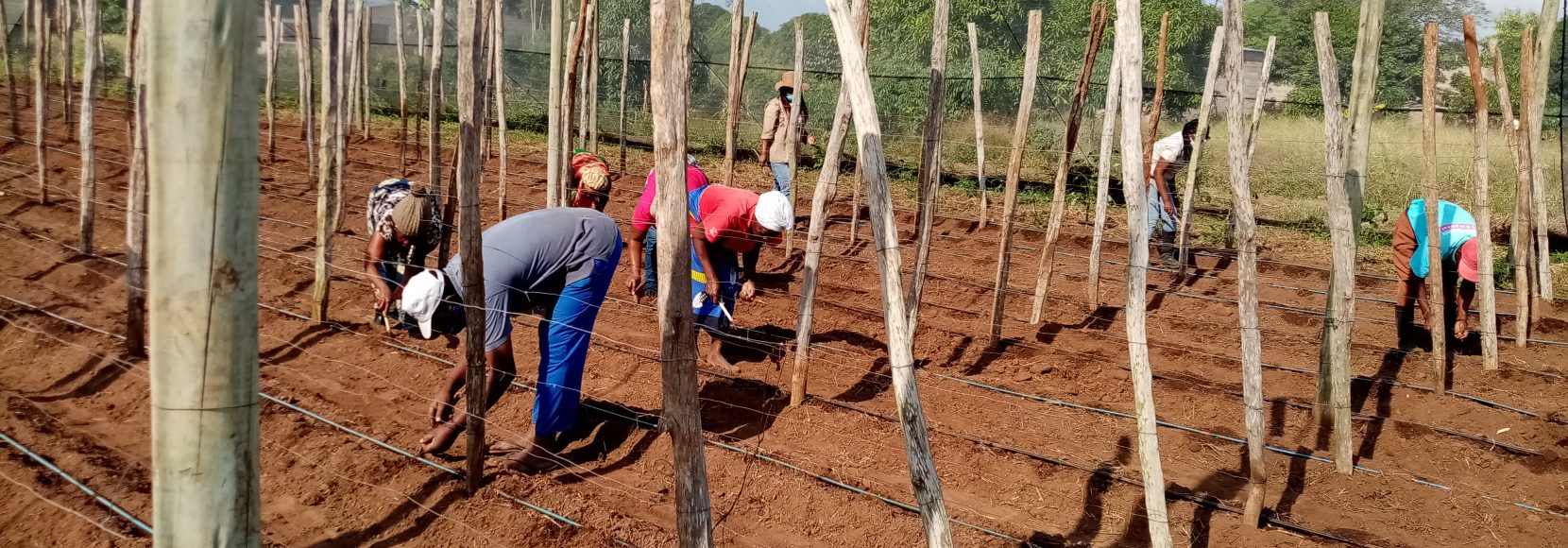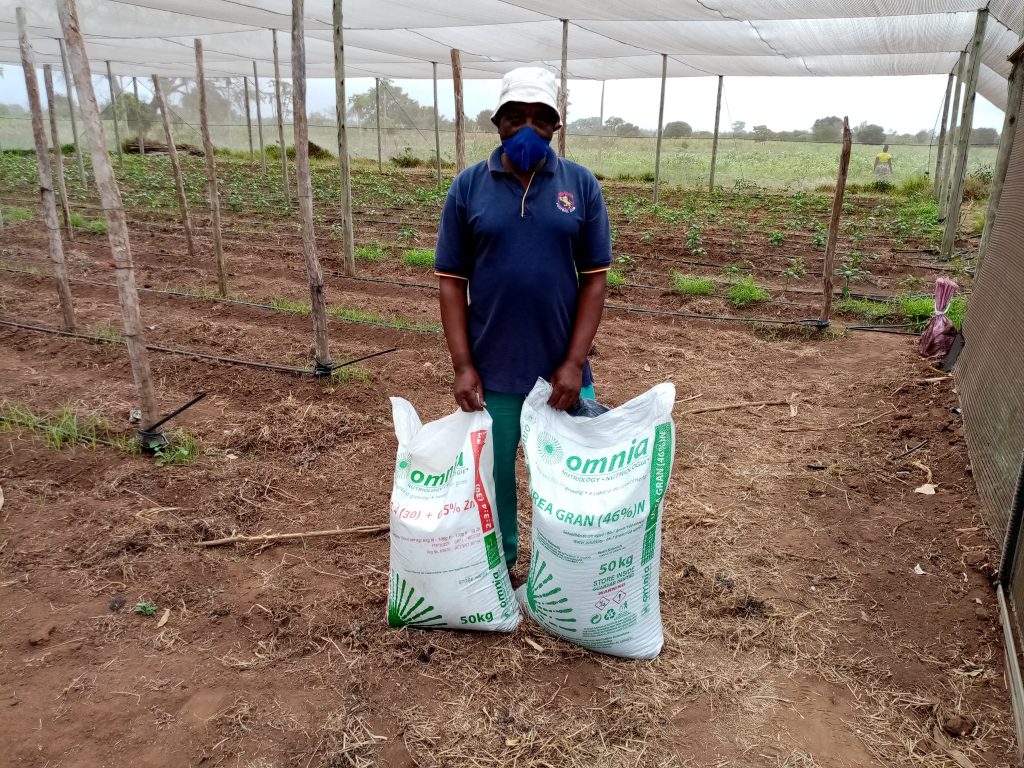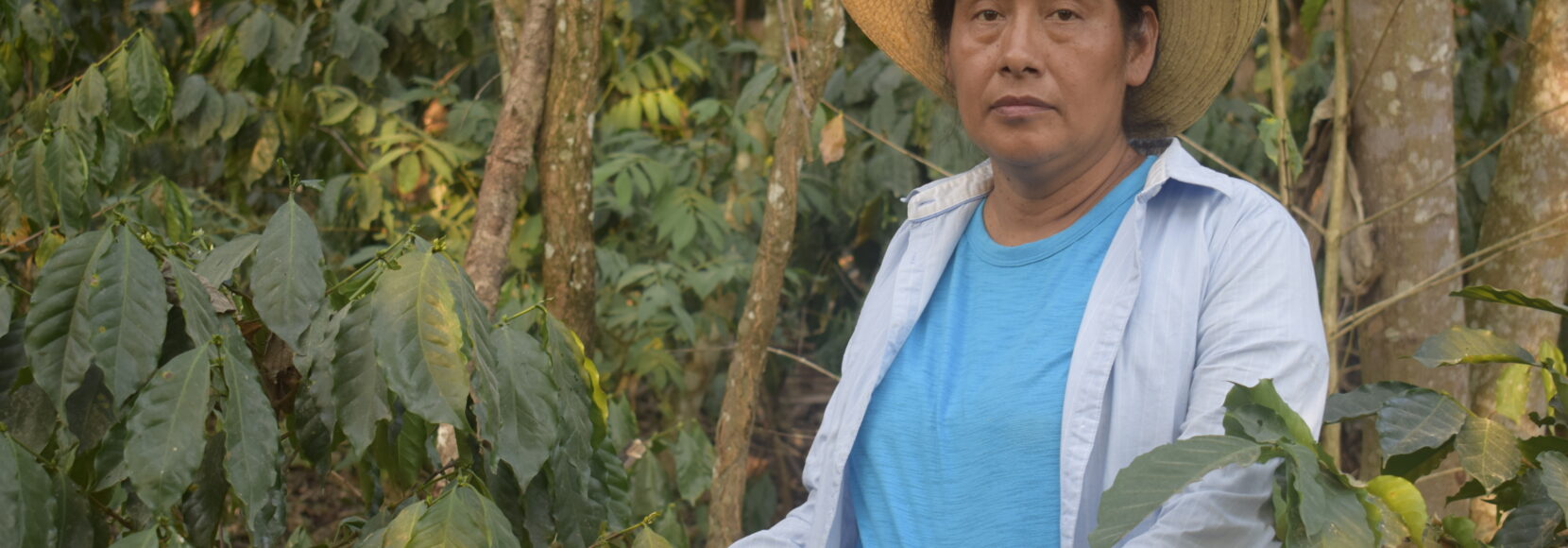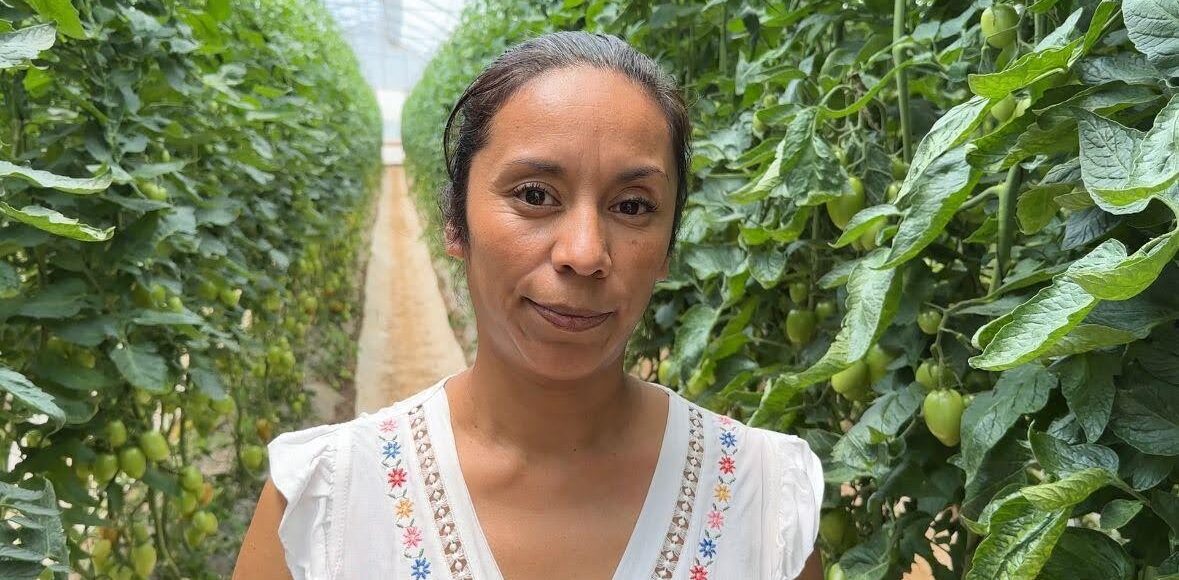
Three Steps to Increased Productivity: Helping Farmers Build Better Farms in Mozambique
Learning new ways to grow old crops helps Mozambican farmers improve their incomes. Read about the three steps Élio Herculano took to improve his cucumbers and his income.
Editor’s Note: The following post was originally published in December 2021 and was updated in January 2024.
Élio Herculano had worked all his life for a state-owned water company in Maputo, the capital of Mozambique. Each day, he put away a little more money to care for his family of seven and to plan for the time when he could retire to a farm outside the capital.
At 61, he finally achieved his dream of becoming a farmer. Fully retired, Élio now owns almost a hectare of open field, and a 625-square-meter shade net, under which he grows a variety of vegetables. These crops now serve as the main income source for his family.
But recently, Élio realized he had a major problem.
Problems on the Farm
Élio’s work in water meant he knew when something was wrong with his irrigation system, which carries water around the farm to his crops.
He shares a water pump with other farmers, who also rely on it for their crops. Whenever it broke, all the farmers’ watering schedules were thrown off. “It’s challenging to collect money to fix it when it’s broken,” Élio says. “It can take a long time.”
Élio tried to address the challenge himself, knowing he had to solve the issue quickly or let his crops suffer. “I had to invest in my own water pump to minimize this problem, but it’s not easy, as my water pump is small and does not have good pressure to pump the water from the river to my plot,” he explains.
The broken pump contributed to a problem already aggravated by climate change, crop rotation, and pest control: low productivity.
And low productivity meant lower income for Élio. He knew he had to do something.
The Bigger Picture in Mozambique
Élio’s problems are not unique in Mozambique.
According to UNICEF, only half of Mozambicans have access to water protected from contamination by pipes or wells – and coverage is worse in rural parts of the country. These rural areas are often plagued by water systems that lack systematic maintenance, face low investment, and have unclear institutional mandates that hinder service delivery.
In other words, water matters.
On the production side of the problem, Mozambique was recently ranked among countries worst affected by climate change. This results in extreme weather events, destroyed infrastructure, and reduced foreign investment.
One World Bank study estimated the country’s annual financial damage from flooding alone at $440 million.
So, every change for the better helps farmers like Élio become more resilient to these catastrophes.
What’s Next? A Three-Step Process
In early 2021, TechnoServe trainers approached Élio and invited him to join the Technology Transfer Model (TTM) program led by an Agricultural Technology Demonstration Center (ATDC) in his community.
TechnoServe’s team discusses existing gaps in production techniques with smallholder farmers and works with them to develop solutions. With the project’s support, the farmer selects the crop and implements technologies – which can range from basic like hybrid seeds to complex like phone apps – to overcome these gaps.
Élio chose cucumbers.
Step One: The Seeds of Success
First, Élio learned about seedling production, which helped make his plants more durable and better able to survive the uncertainty of the farm’s production process, the problematic irrigation system, and climate disruptions.
“I learned that I must not mix up vegetables in the same plot. My plot is not too big, and after working with TechnoServe, I understand that it was not a good idea,” he says. “Each crop has different needs.”
After growing high-quality seedlings, Élio moved on to preparing the land and planting the seedlings on his farm.
Step Two: Caring for His Young Plants
Élio was then introduced to crop care like pest and disease control, fertilizing, weeding, and staking. All of these strategies helped him address the low productivity of his land by growing the new seedlings to be more resilient to inconsistent watering and weather.

Élio saw changes in real-time: “I see that these cucumber plants are giving me one cucumber per leaf. The variety I planted previously only provided one cucumber for every three leaves.”
While that change may not seem like much, the results meant a lot to Élio, his yields, and his income for the family – especially in a program that’s showing an average yield increase of 38%.
Step Three: Better Business Skills
Finally, Élio received training on record keeping and data management, which helped him make decisions and investments about what to buy for the farm.
“It will help me calculate my production costs, as I will have somewhere to check to remember all activities I did, the quantity of inputs I applied, or the number of people who worked on a specific activity,” he says.
So when it comes to problems like broken pumps in the future, Élio will have a better sense of what he can afford to pay or how much each farmer should pitch in.
Élio Saves for the Future
Although Élio did raise his cucumber sales by 30% in 2021, he didn’t indulge, instead choosing to take it slow. “There is not much I can report in terms of things I bought,” he notes.
“Now, the most important thing is to consolidate what I have learned,” Élio continues. “To do that, I preferred to reinvest what I gained in production in place of purchasing goods.”
He’s still thinking long-term, looking at farmer communications, crop selection, and pest management to better the productivity of his farm and others in the community. “I am going to improve my production techniques, and that will allow me to improve my productivity and, hopefully, income.”
He’s also encouraging his son to get involved. “He loves going to the farm with me and I am teaching him how to [grow] produce,” Élio adds. “I wish he could go to an agriculture school and have a farm.”
“After that I will be able to decide what to buy – if things run well.”
RELATED CONTENT:
- TechnoServe’s work in Mozambique
- Agricultural Technology Demonstration Center
- Celebrating 25 Years of Fighting Poverty in Mozambique





